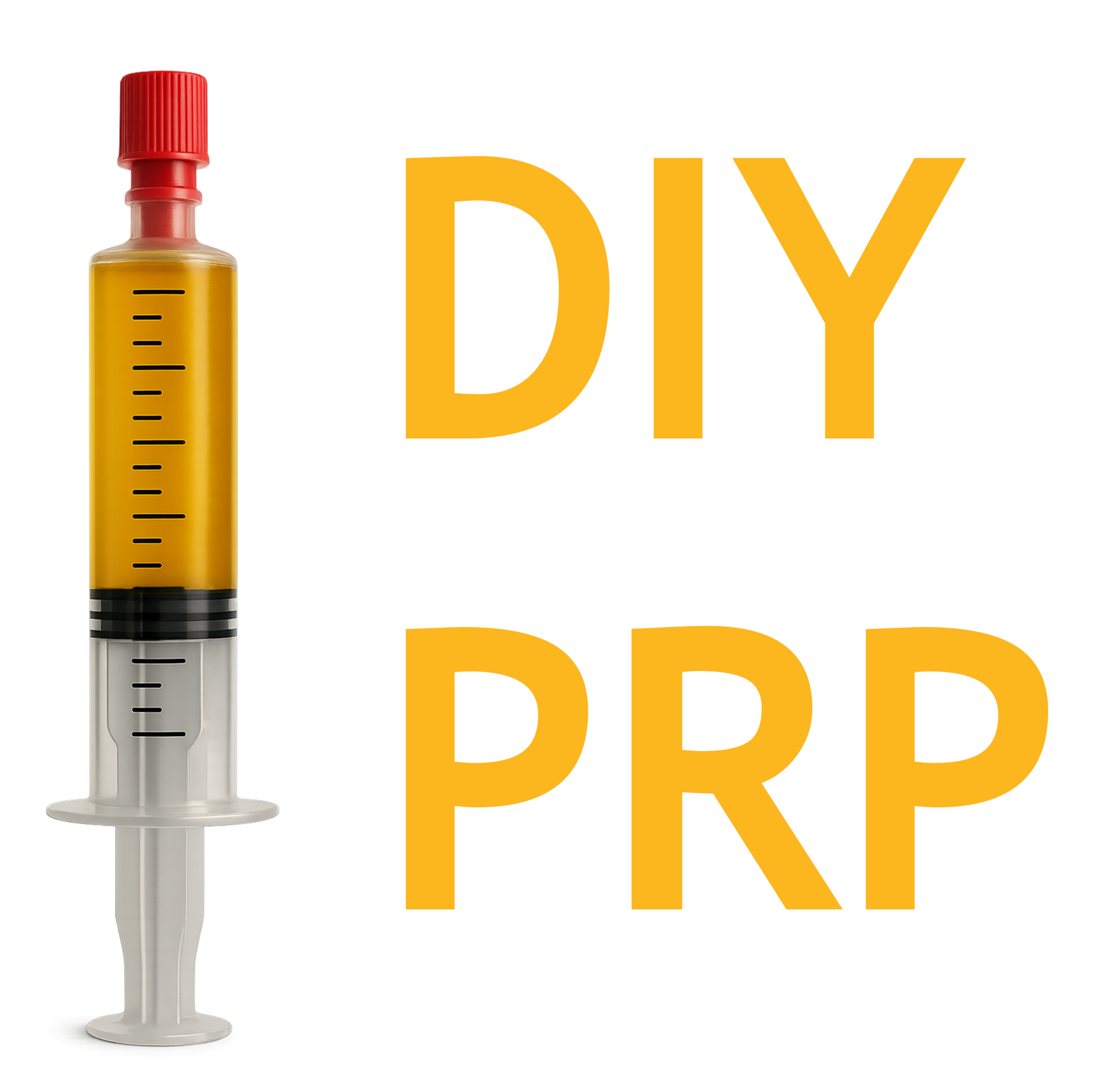The landscape of regenerative medicine is evolving rapidly, but accessibility has lagged behind. High-cost systems, proprietary kits, and procedural opacity have made platelet-rich plasma (PRP) therapy the domain of commercial providers and institutional clinics. DIYPRP was created to change that—not by simplifying the science, but by equipping individuals and practitioners with the clarity, tools, and methodology to perform mechanically superior, therapeutically effective PRP preparation using commercially available components and research-backed protocols.
This project centers on a singular premise: the sophistication of PRP therapy need not be exclusive.
What This Project Is—and What It Is Not
DIYPRP is a research-driven, systematized approach to autologous regenerative medicine, optimized for precision, repeatability, and leukocyte control. At the core of this platform is the NeutroFree PRP System—a closed-loop, double-spin preparation method engineered for high-yield leukocyte-poor PRP (LP-PRP) with minimal contamination from neutrophils or erythrocytes.
This system does not rely on vacutainers.
In fact, you may have noticed—we avoid them entirely.
Vacutainer-based methods introduce coagulation risk, endotoxin exposure, and imprecision in plasma layer selection. Our system, by contrast, leverages the physical and mechanical advantages of syringe-based whole blood collection and concentration, where the plunger, not the needle, determines the platelet interface. This results in higher platelet recovery, reduced leukocyte content, and greater control over PRP phenotype—critical for intra-articular and ligamentous applications where inflammatory modulation is a therapeutic priority.
Why Leukocyte-Poor PRP, and Why Now?
Our present focus is on collagen-rich healing environments: intra-articular joint spaces, ligament insertions, and cartilage-adjacent recesses. These structures are highly sensitive to the biochemical makeup of the injectate. Emerging literature suggests that neutrophil-driven cytokines such as IL-1β and TNF-α may exacerbate degradation in cartilaginous tissue. As such, LP-PRP offers a favorable inflammatory profile for the types of injuries we care about most—patellofemoral chondropathy, acetabular labral pathology, ligament tears, and other sports-related musculoskeletal injuries.
We will, however, explore leukocyte-rich PRP (LR-PRP) in future studies—particularly for enthesopathies, chronic tendinopathies, and contexts where controlled inflammation may drive repair. But for now, the goal is precise modulation, not indiscriminate stimulation.
A Living System of Research
This site is not static. We are actively building a repository of applied research, mechanical testing data, and biological rationale. Our protocols are constantly evolving based on performance data, centrifuge optimization, and live hemogram testing. We believe in open inquiry, not closed loops.
In the coming months, we will begin publishing use-case studies, user-submitted protocols, and data from lab-based platelet counts and leukocyte analysis. Our research interests are also expanding into plasma protein concentration technologies—including hemoconcentration of interleukin-1 receptor antagonist proteins (IRAP) and alpha-2-macroglobulin (A2M)—to further optimize the PRP product for intra-articular and soft tissue use.
An Invitation to Contribute
This project could be considered open-source in spirit, if not yet in formal structure. Readers are encouraged to engage, challenge, and contribute. If you’re a physician with clinical insight, a biomechanical engineer with an interest in PRP fluid dynamics, or simply an individual with the technical proficiency to prepare your own injectate—we want to hear from you.
DIYPRP was built on the idea that technical competence is no longer confined to institutional walls. As global access to scientific knowledge increases, so does the responsibility to share what works.
Up Next
Over the course of our next posts, you’ll get to know our upcoming content and research directions, including:
- How syringe connector geometry and cone taper affect platelet selection
- Why platelet recovery may be more clinically important than concentration ratio
- A guide to getting started with PRP at home, including sourcing and setup
- Comparative analysis of anticoagulants and their effects on platelet viability
- And a biological review of how red blood cells in joint spaces accelerate cartilage degradation
This is just the beginning. Stay tuned.


Leave a Reply